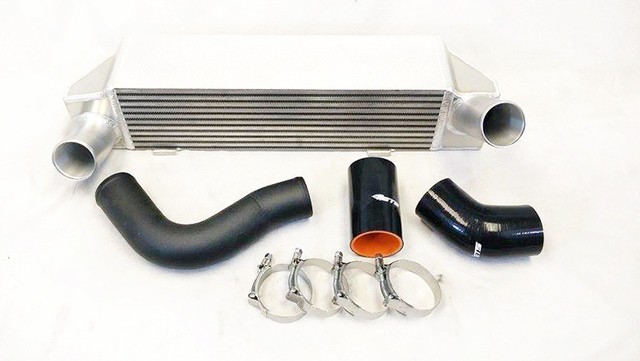


(Independent test data fr om JustinCredibleM)
#Ets 5'' intercooler series#
With our Competition Series FMIC, the IATs are stable, indicating heatsoak under control. With the factory intercooler, heatsoak is easily shown on the graph by the constant upwards climb of the IATs. Outside temperature of Competition FMIC run was a hotter 70F. Outside temperature of factory intercooler run was 63F. With it's size and ability to support over 600hp, it is most likely the "last intercooler you will ever buy".ģrd Gear to 5th Gear Pull. With countless test and competition laps around our local racetracks in 100+ degree weather, heatsoak is not a problem.
#Ets 5'' intercooler full#
Our intercoolers are designed to withstand the rigors of harsh racing conditions like road racing where you are at full throttle for long periods of time, sometimes behind other cars blocking direct airflow needed to cool down your intercooler. Other brand intercoolers may be adequate for short period pulls like the 1/4 mile (with hours between runs to cool down). Our Competition FMIC is just what it is called, designed for competition. Beat on it all day long and the IATs will consistently stay the same. This is why pull after pull, our FMIC does not heatsoak. Also, our FMIC recovers so quickly after a full throttle pull that once you shift, it recovers completely. Heatsoaking is not an issue at all as shown by the consistency of the IAT staying in the same temperature range throughout the WHOLE RPM powerband. We also did extensive testing on the proper size to use to effectively cool the hot charged air as well as fight off heatsoak (when the intercooler cannot transfer heat away faster that the heating building up from the hot intake air). We've even had competing companies utilize our intercoolers for competition instead of their own! The independent test data below shows that our FMIC is so efficient in cooling that it has cooled intake air temperatures (IAT) to almost ambient (outside) temperatures.

Independent testing (by customers and shops) throughout the years have shown that time and time again, our intercooler cores have outperformed our competitors. What this means is that compared to a cheap overseas core, we can get the same efficiency in roughly half the core size. Our Evolution Racewerks cores are 18-20 fins per square inch. Cheap quality oversea cores utilize around 8-10 fins per square inch (some even lower) which explains why they perform so poorly even though a large core is utilized. What does this mean in the real world? Most quality intercooler cores utilize around 12-14 fins per square inch. More fin density = more actual surface area. Why is this important? The fins are the main heat transfer surface. What's different about our bar and plate core you ask? Fin density. Through extensive testing of different types of intercooler cores (tube & fin, bar & plate) we developed our own high density bar and plate core. It features 660 cubic inches of very efficient high density bar & plate core (35% larger) versus the factory 425 cubic inches of less efficient tube & fin core. The heart of the ER Competition FMIC is the massive 20"x11"x3" (26"x11"x3" with end tanks) featuring our famous high density bar and plate intercooler core. Factory Intercooler versus Competition Series FMIC


 0 kommentar(er)
0 kommentar(er)
